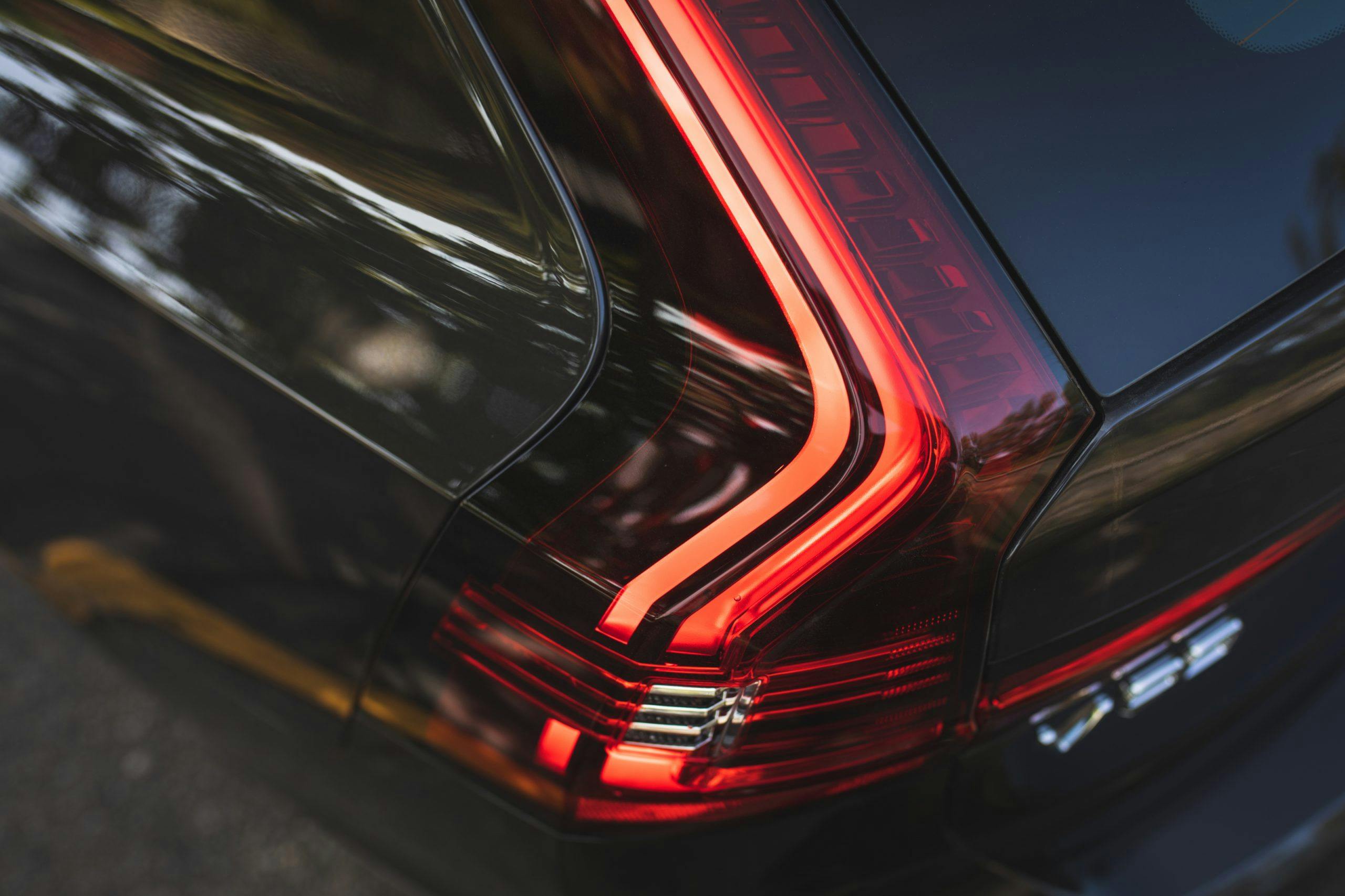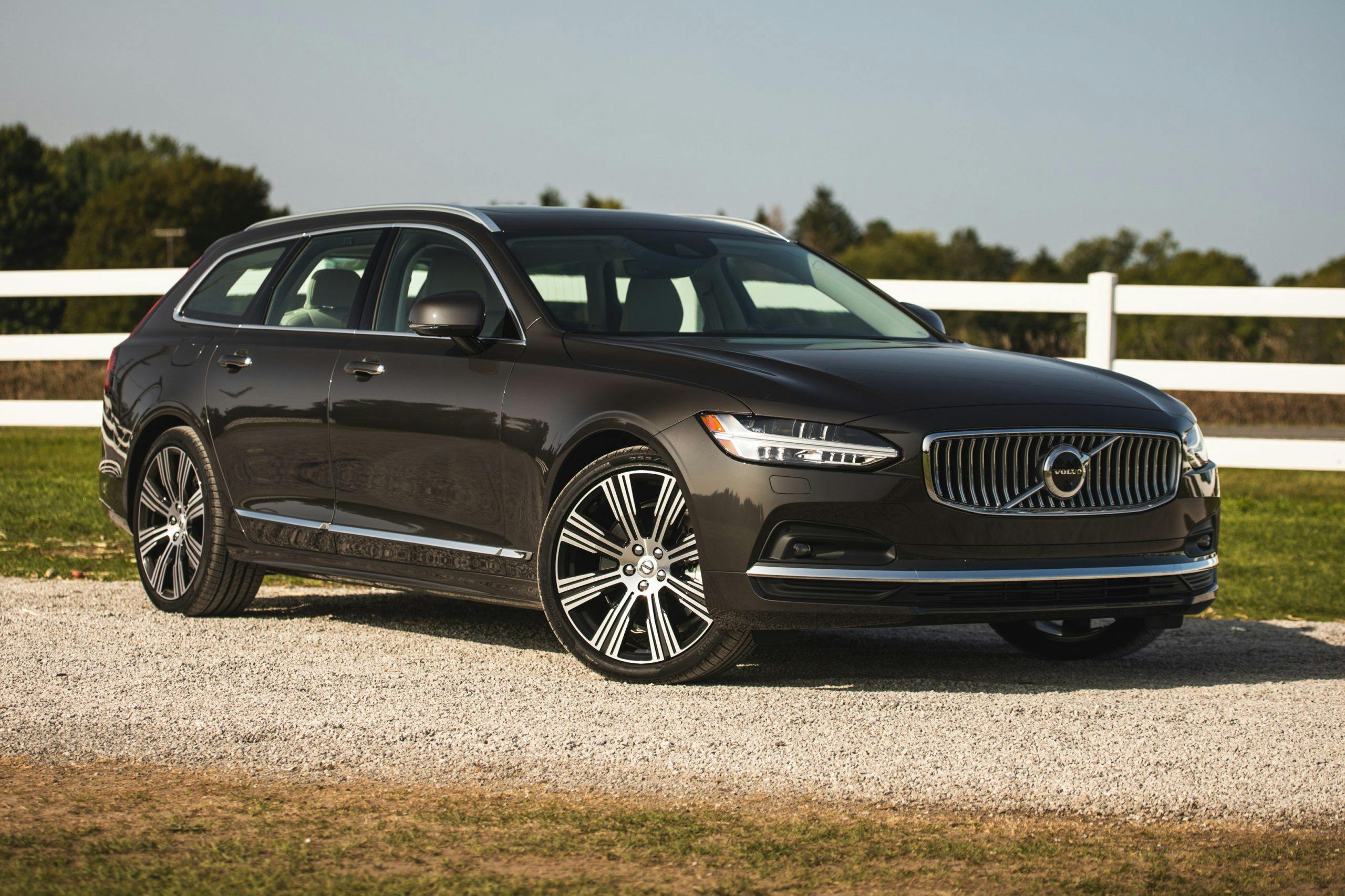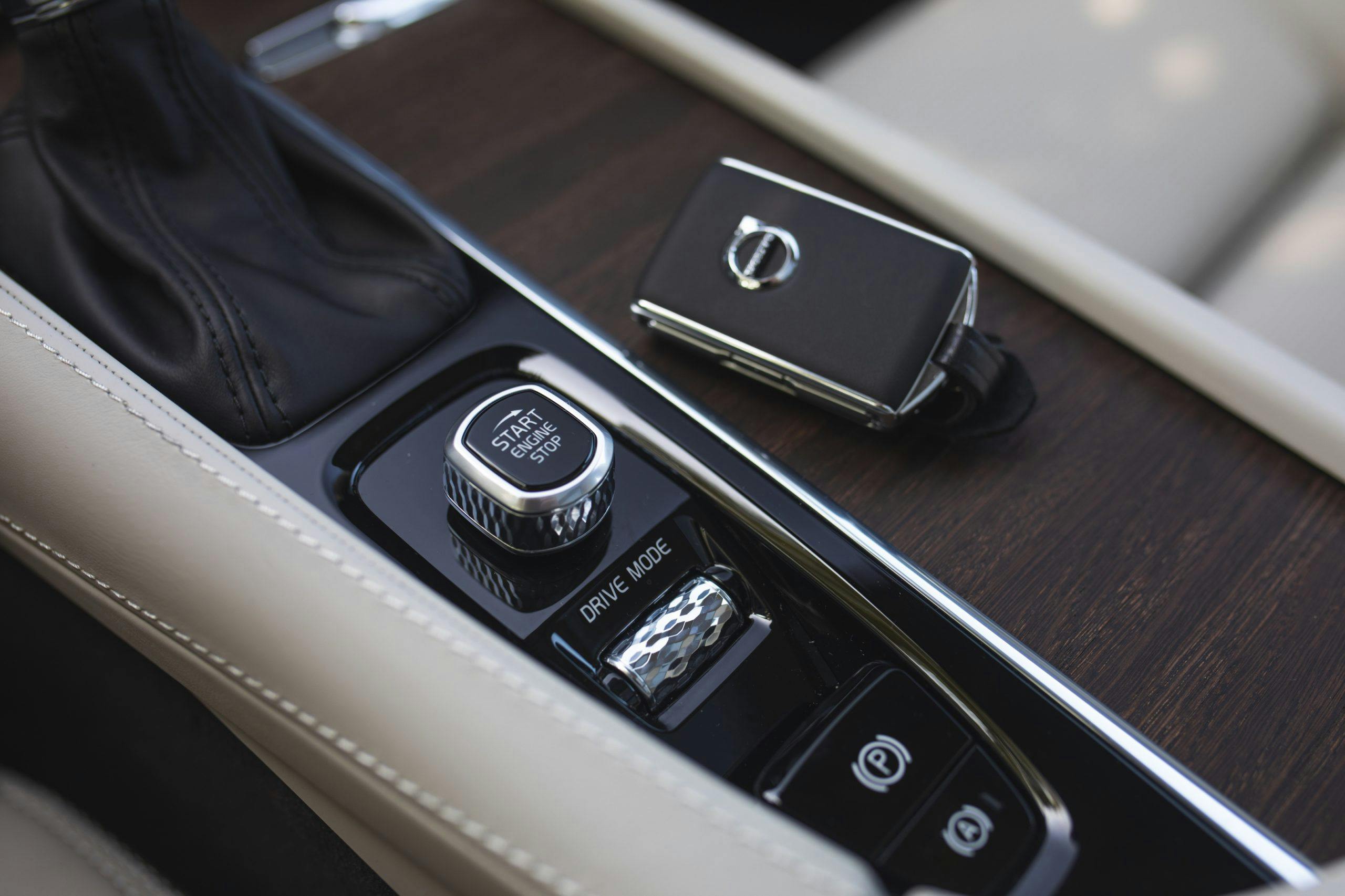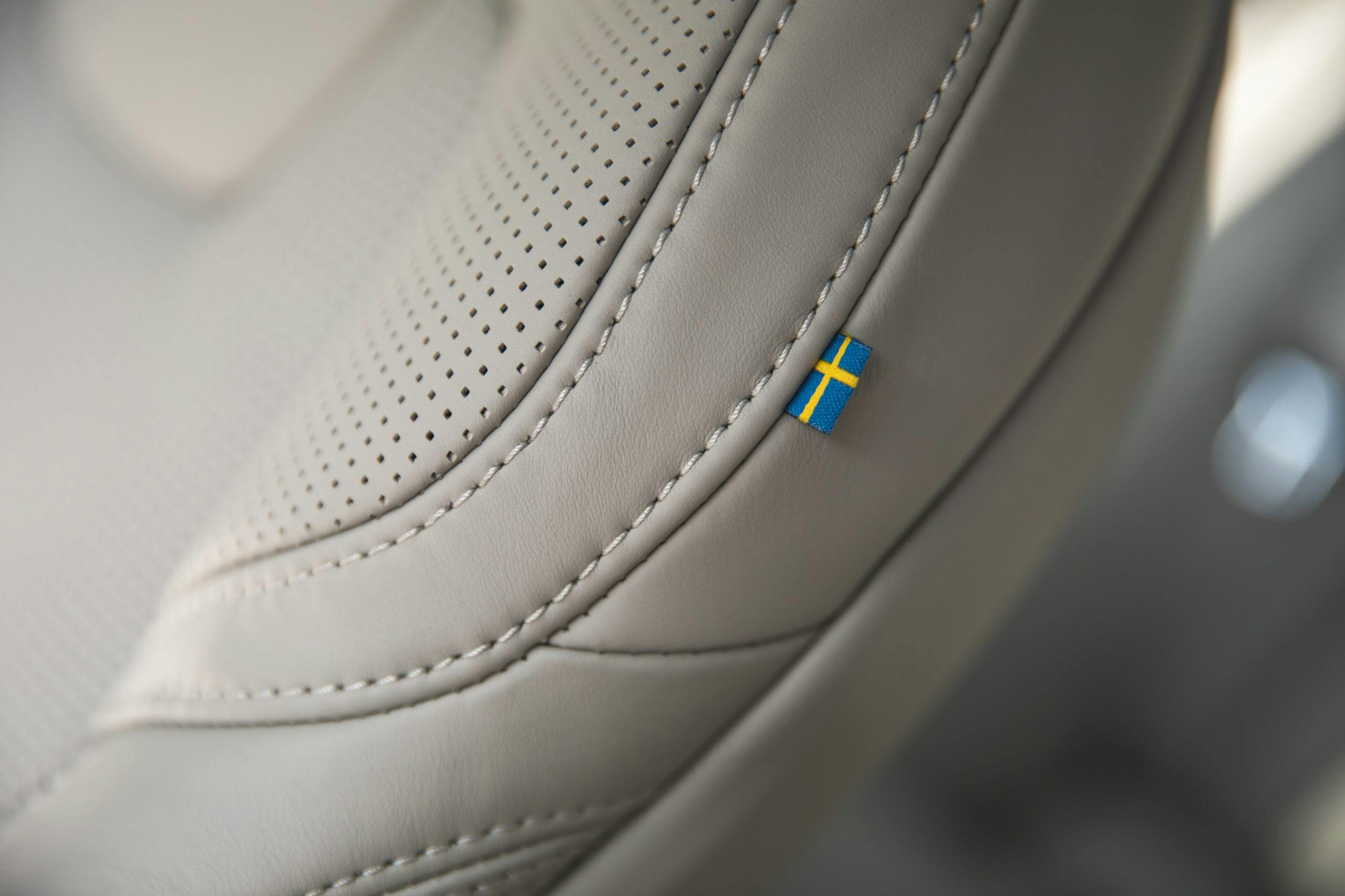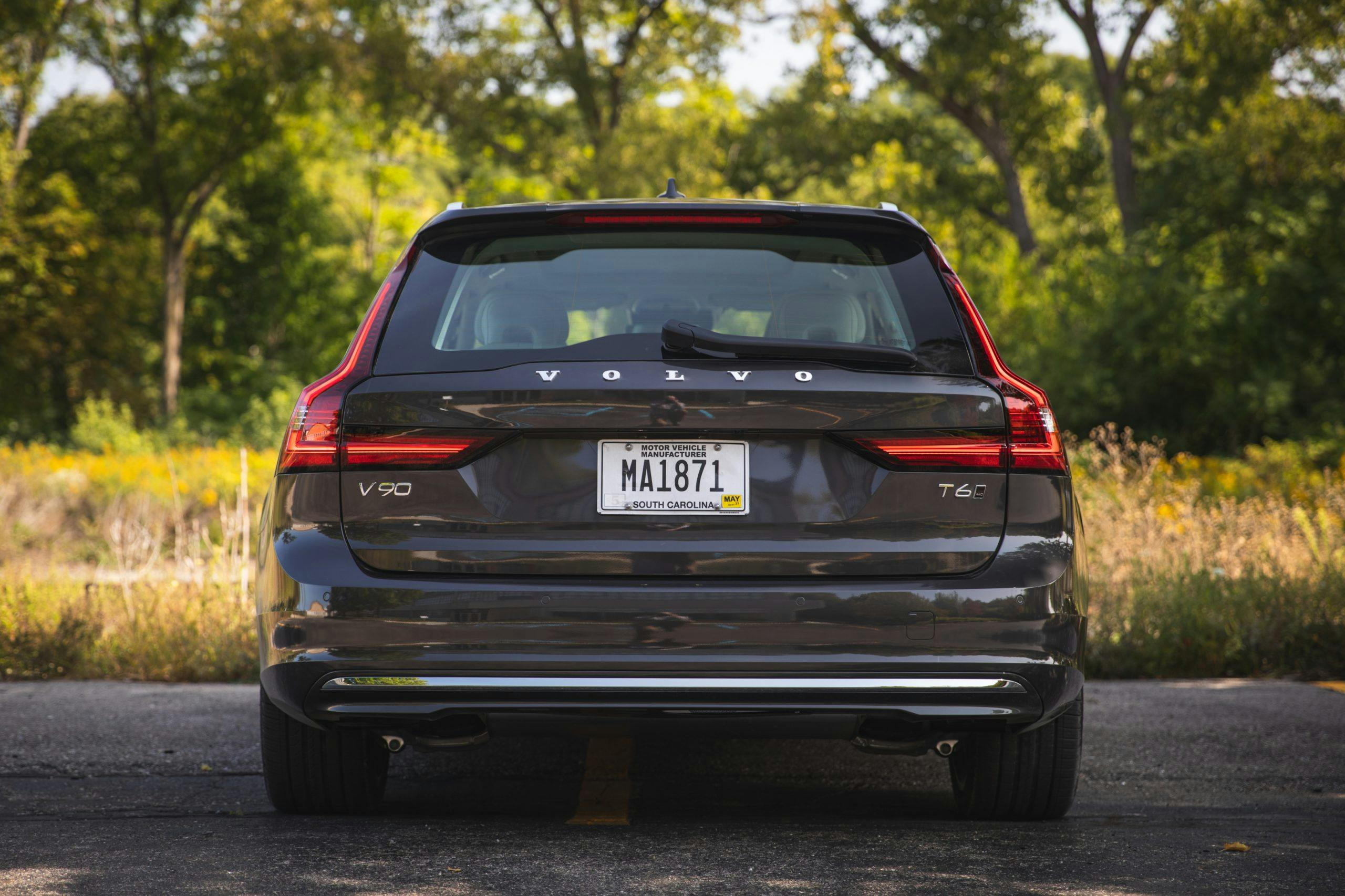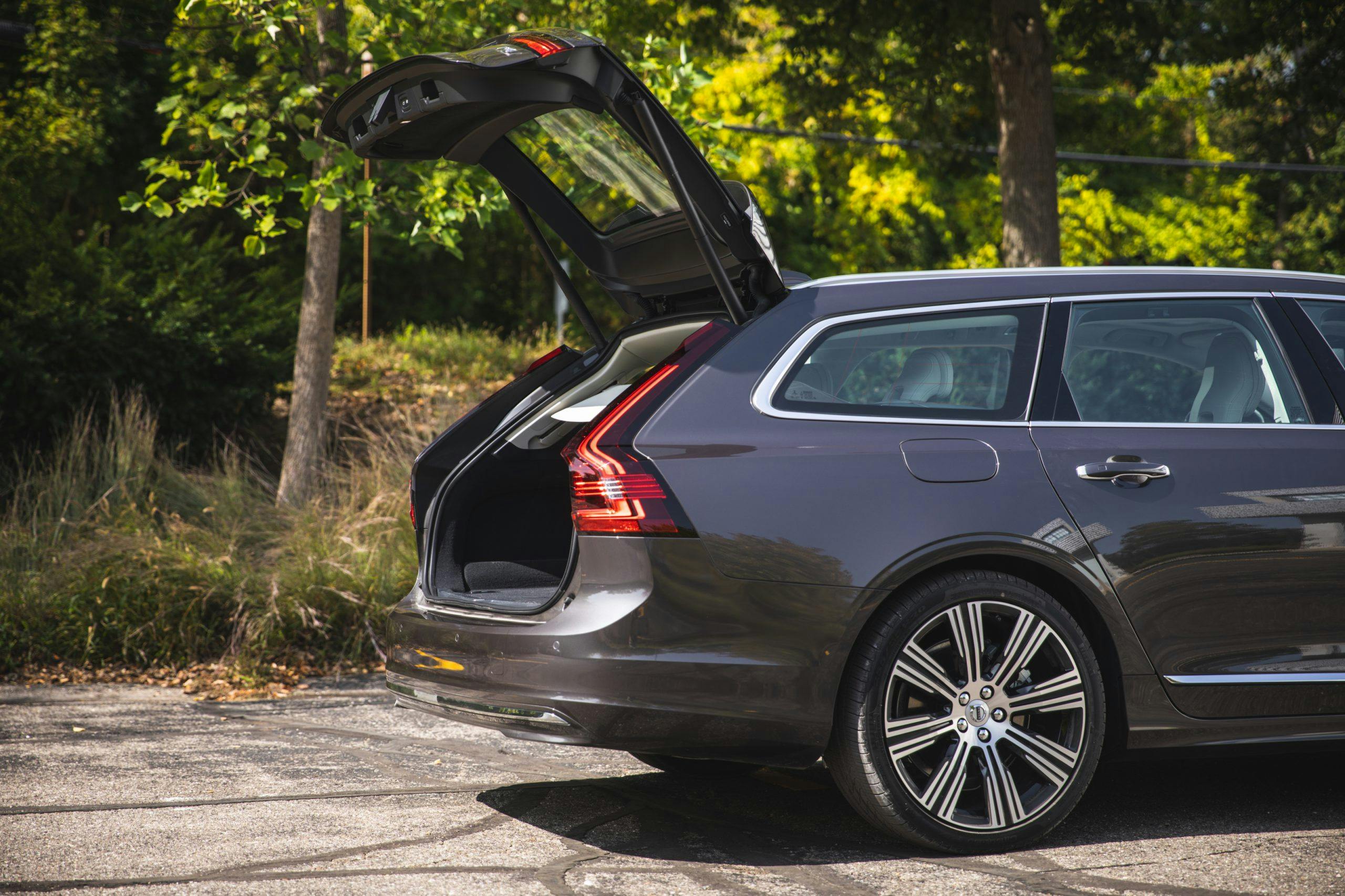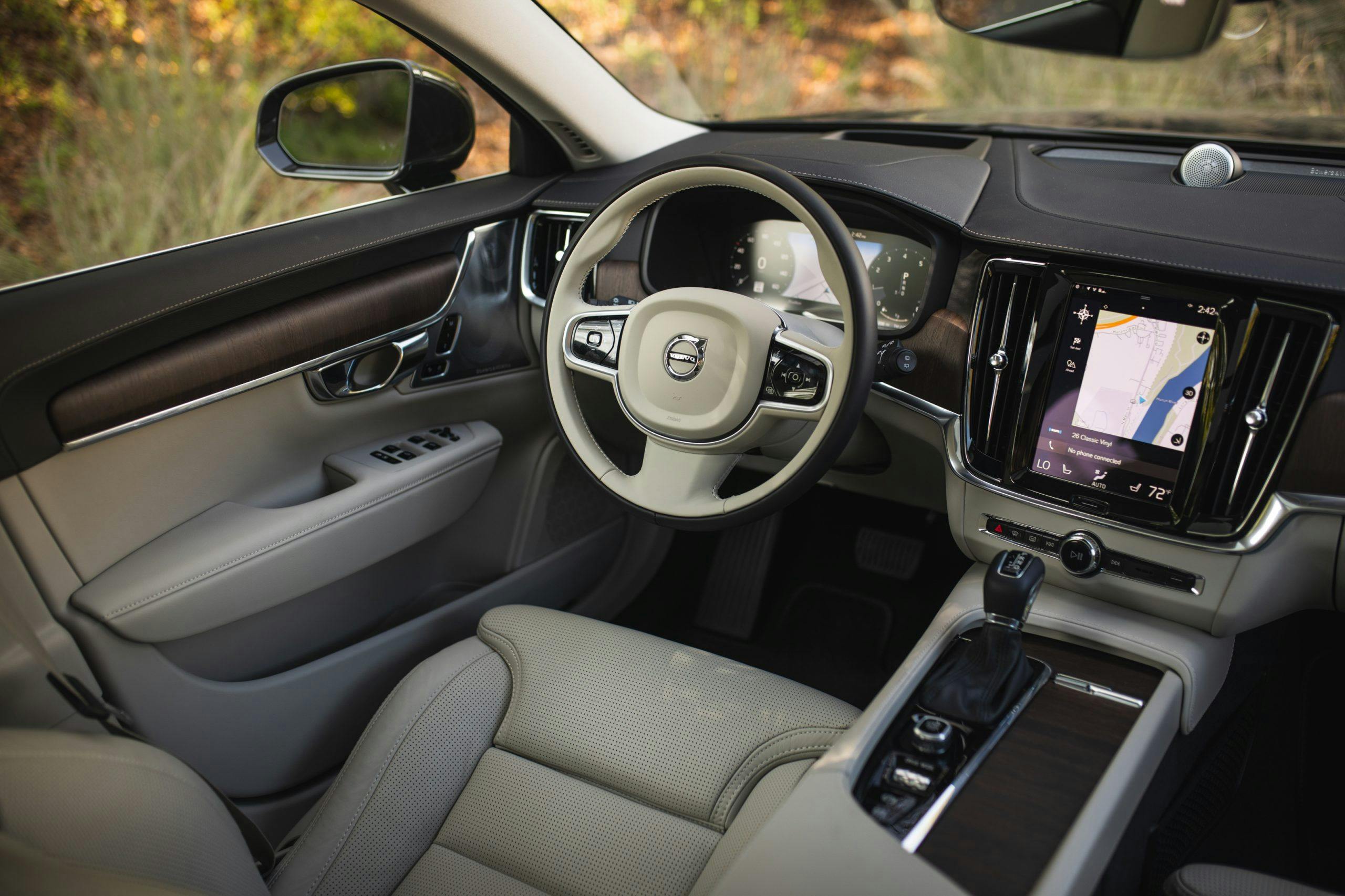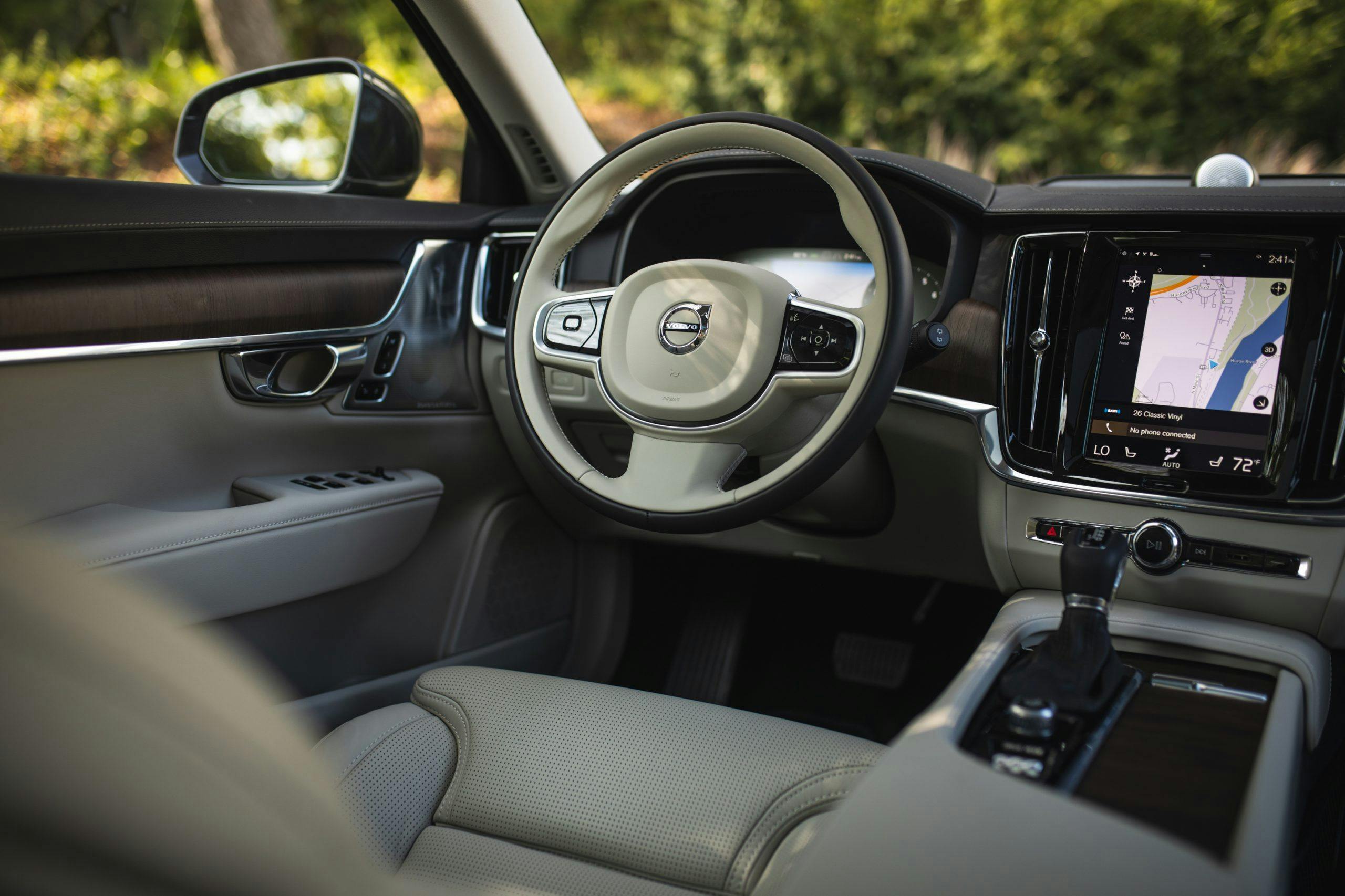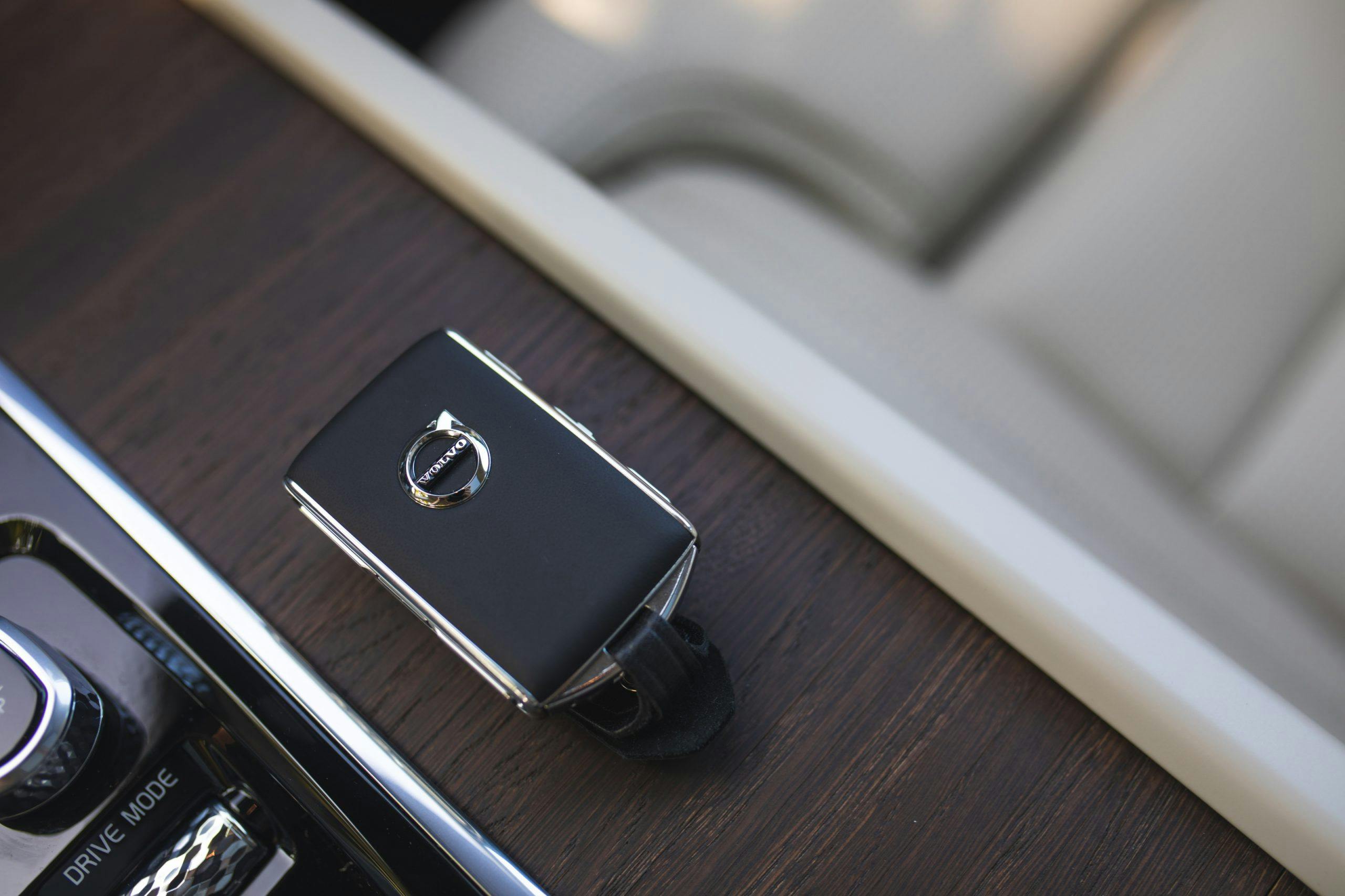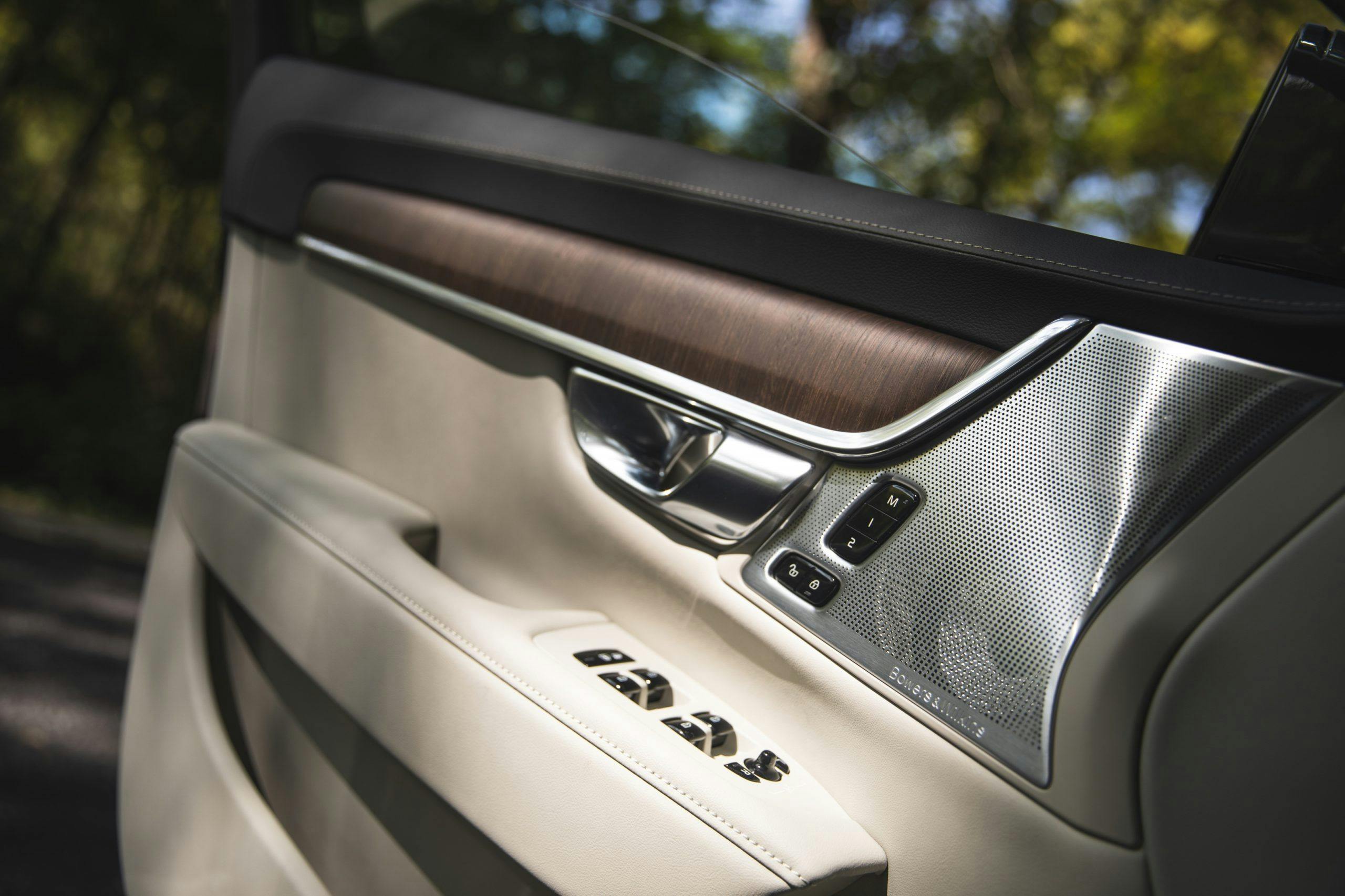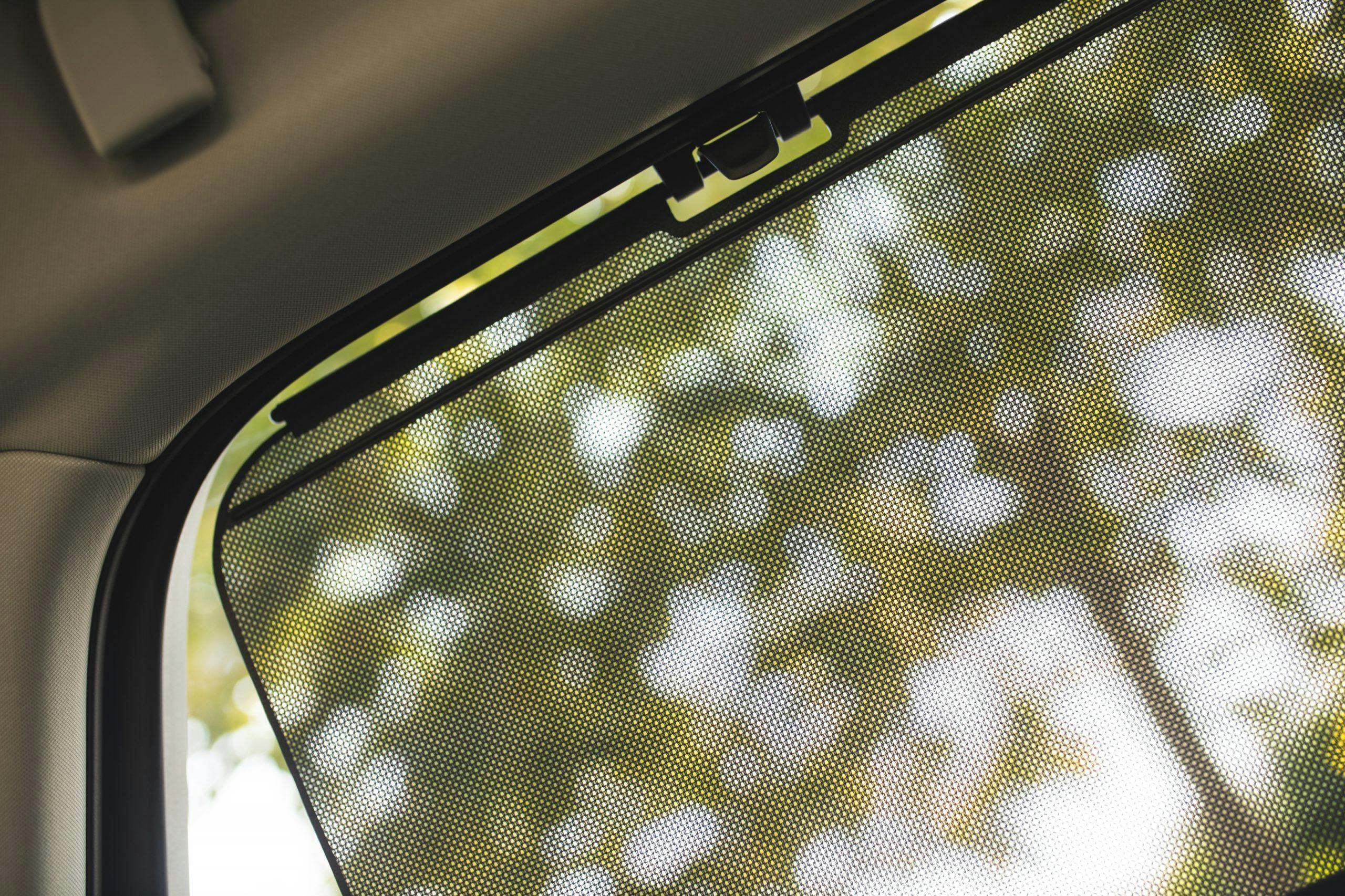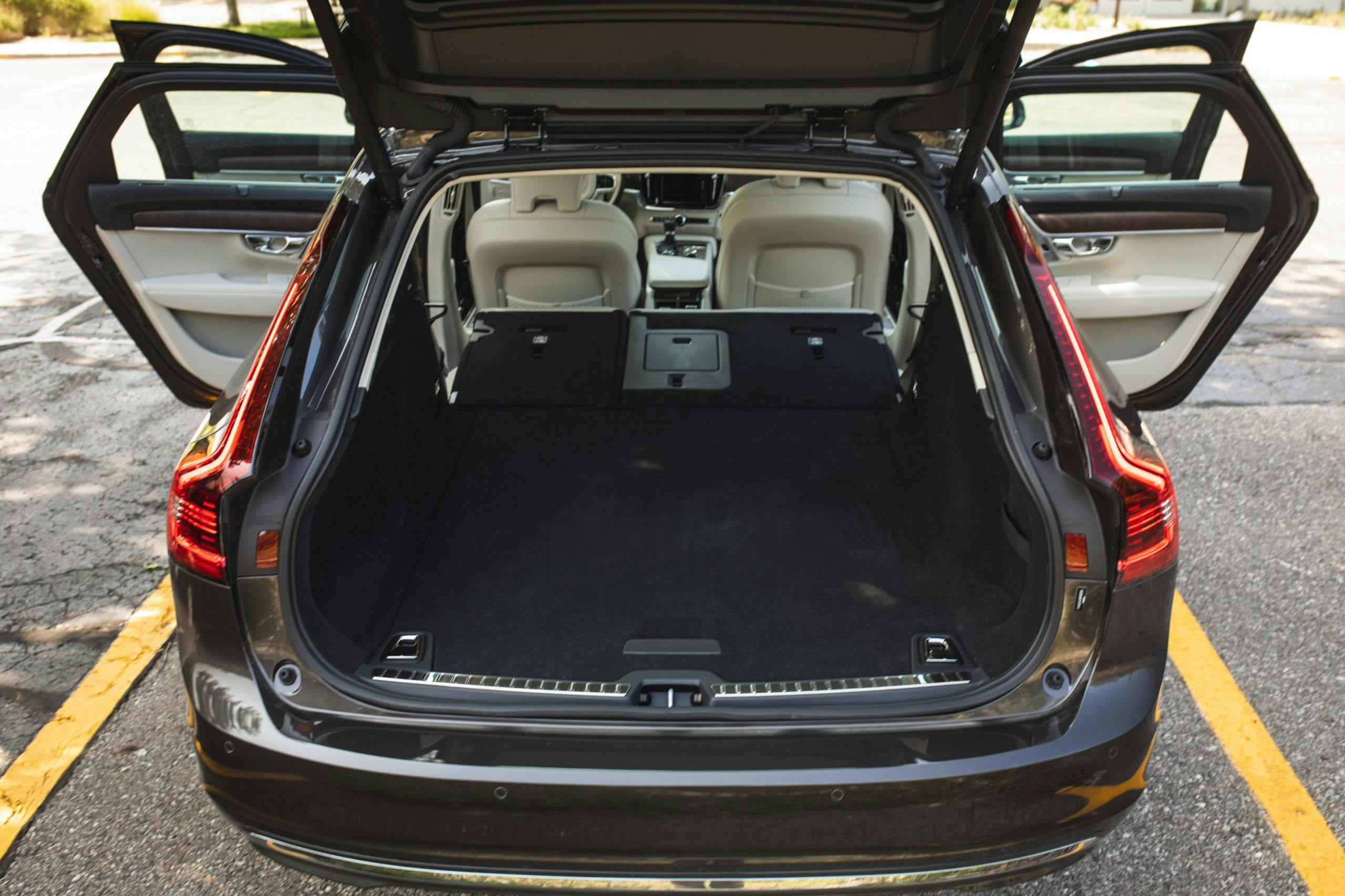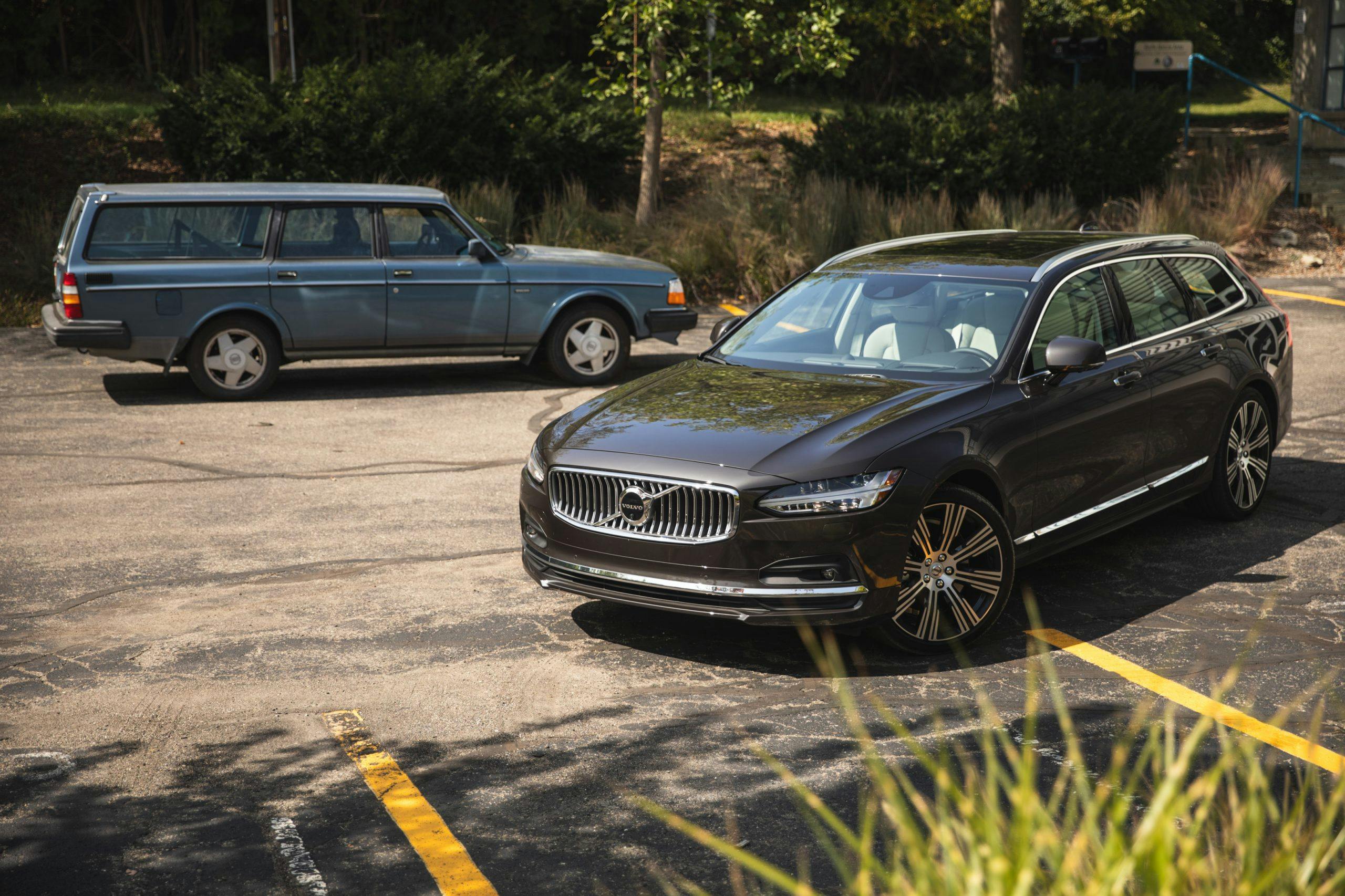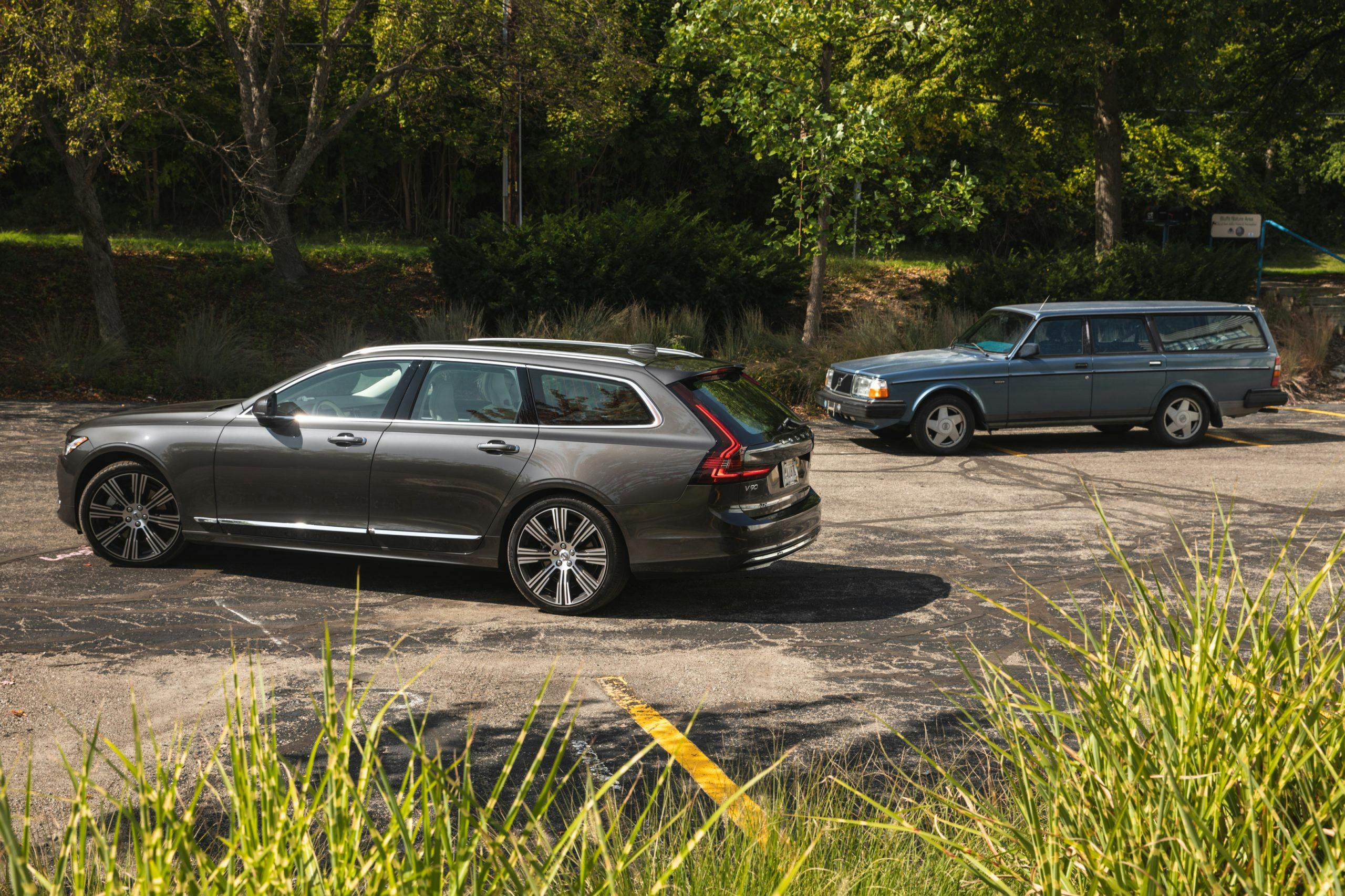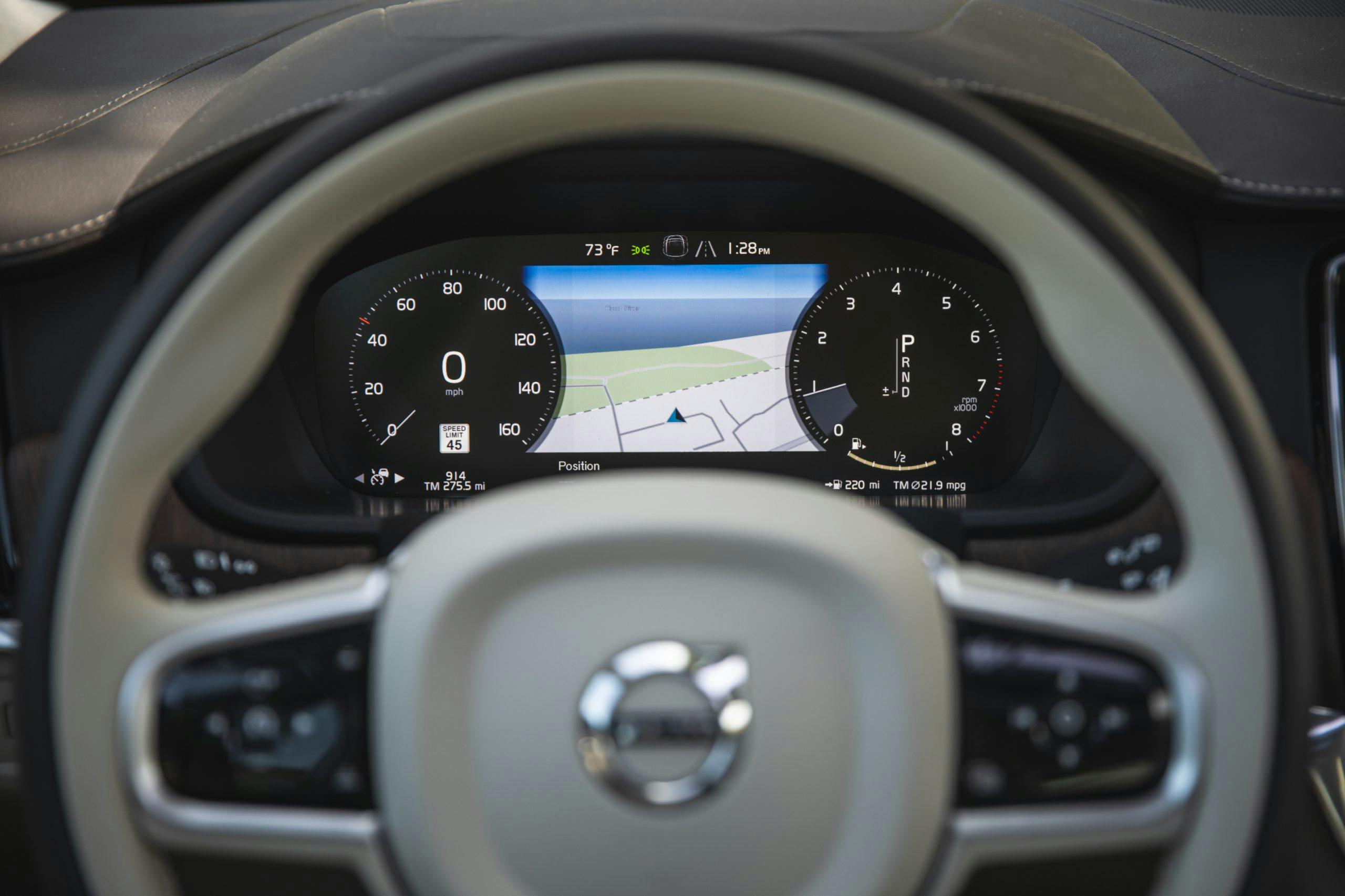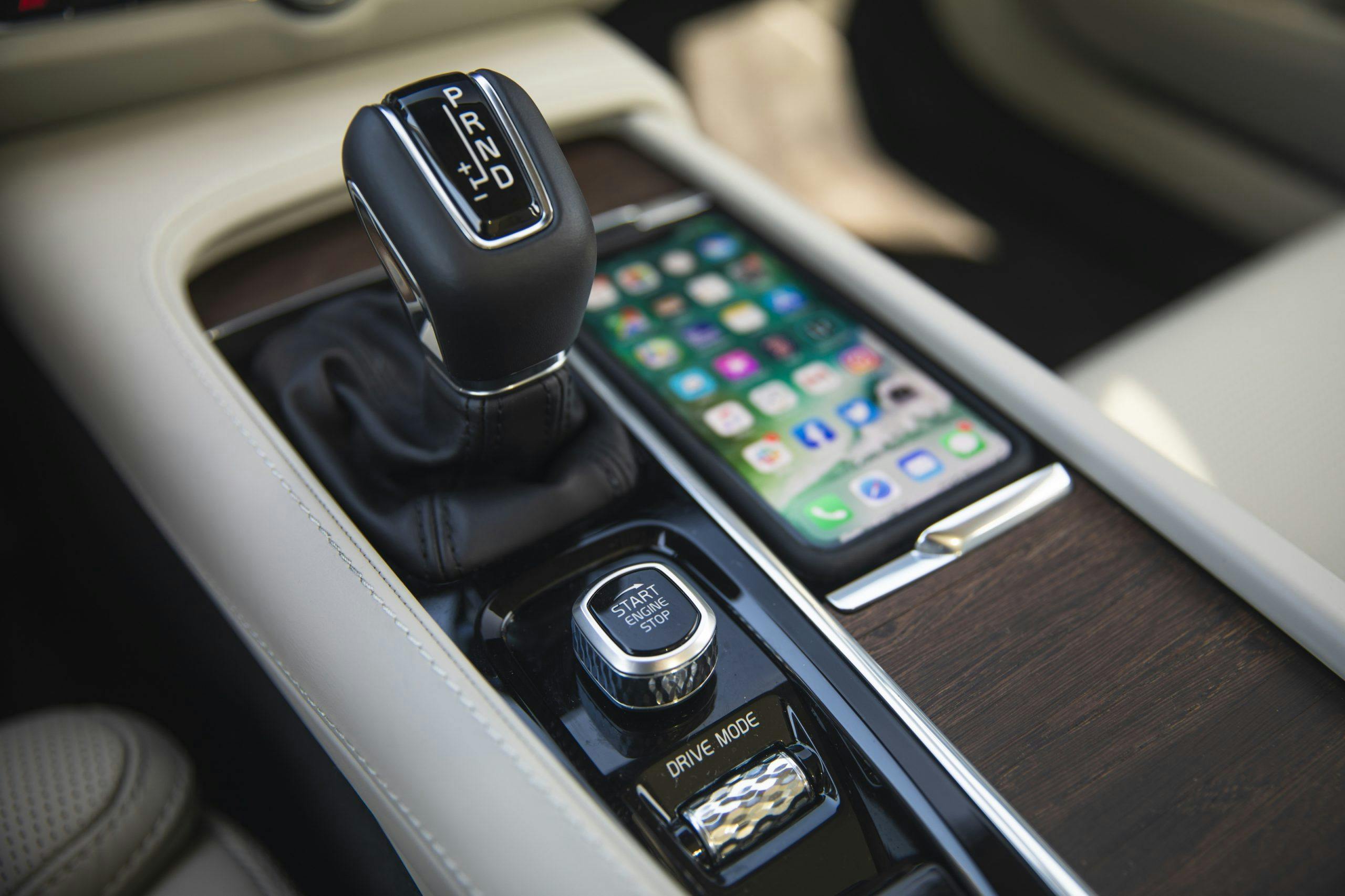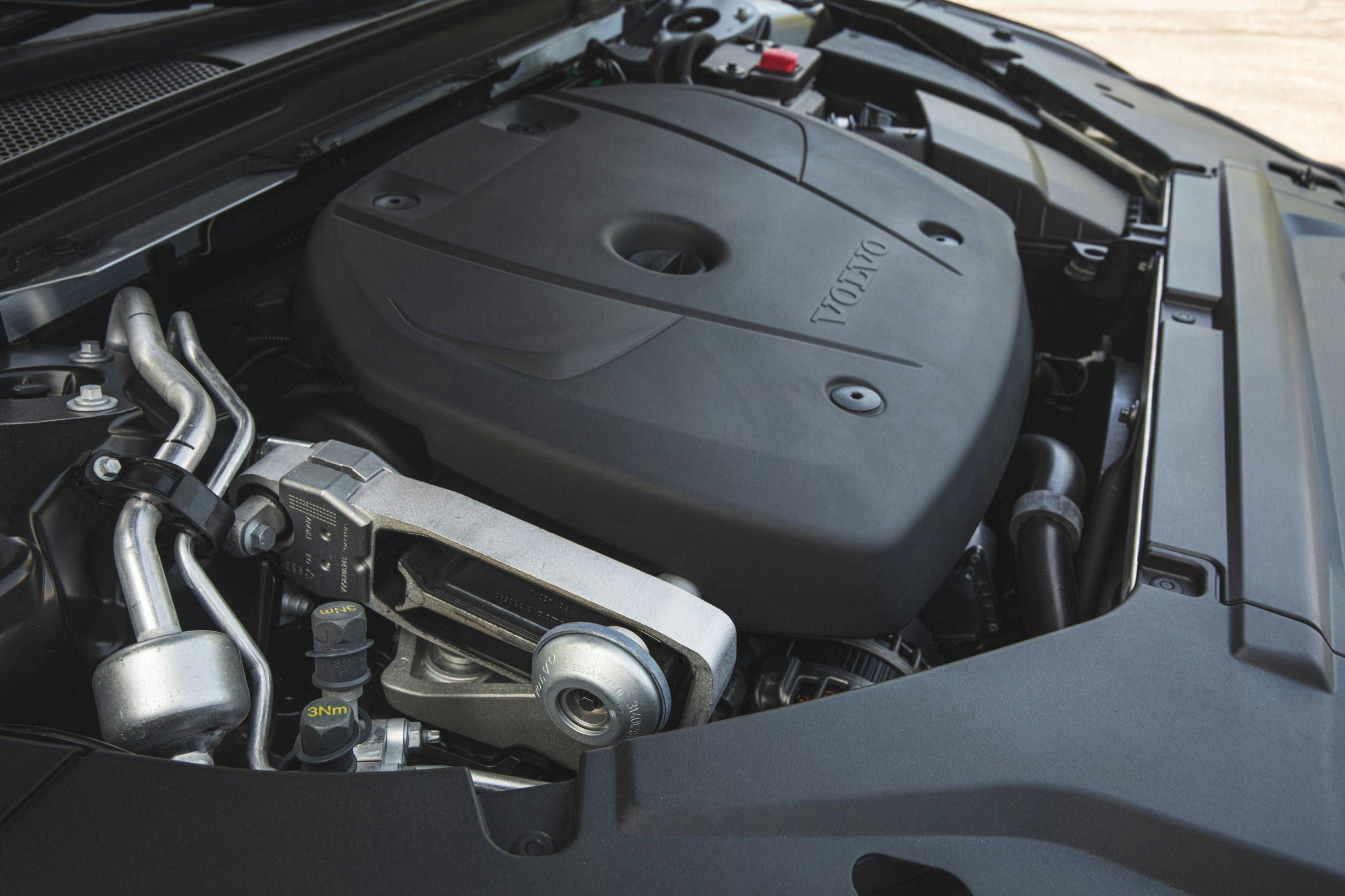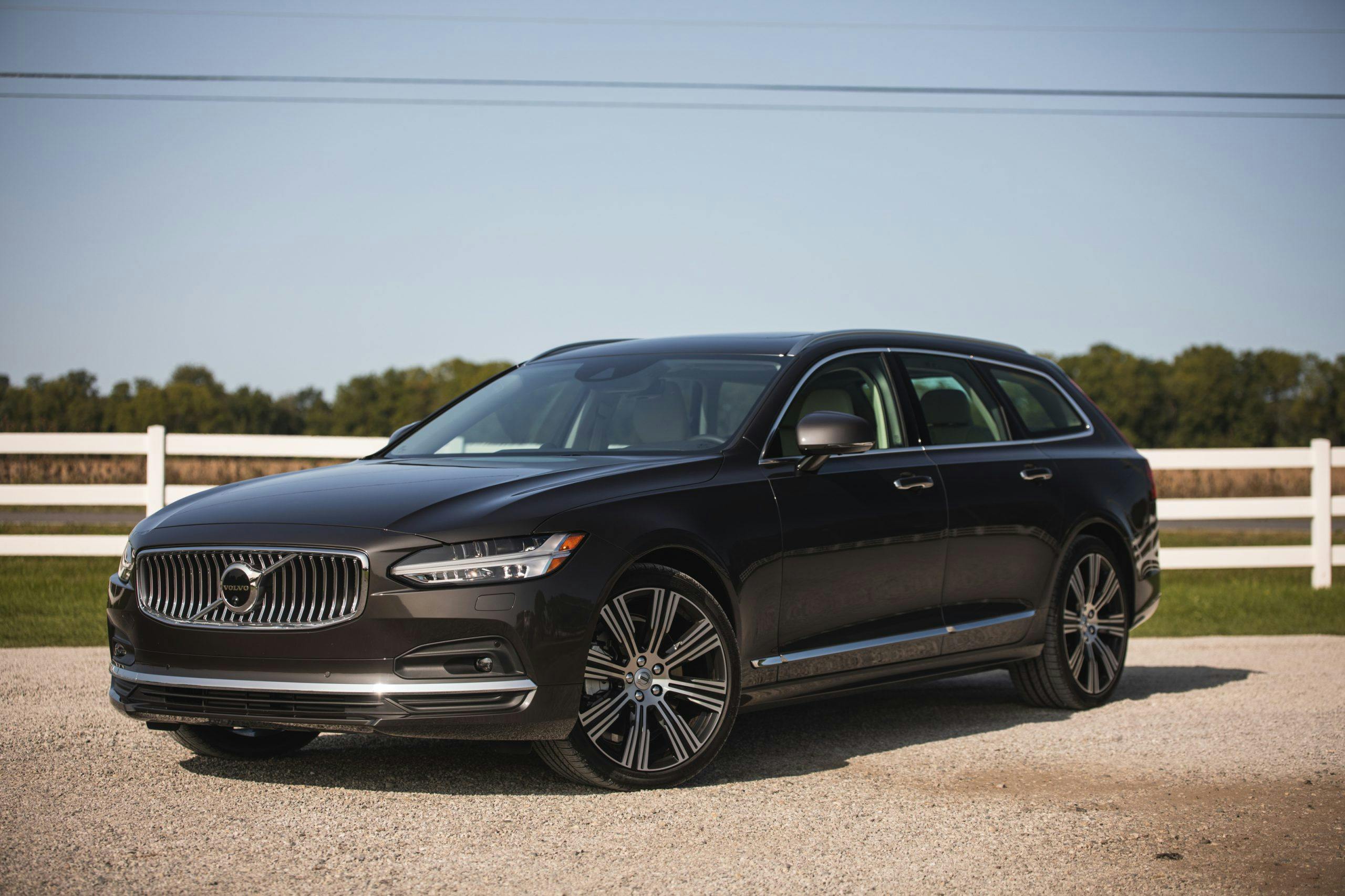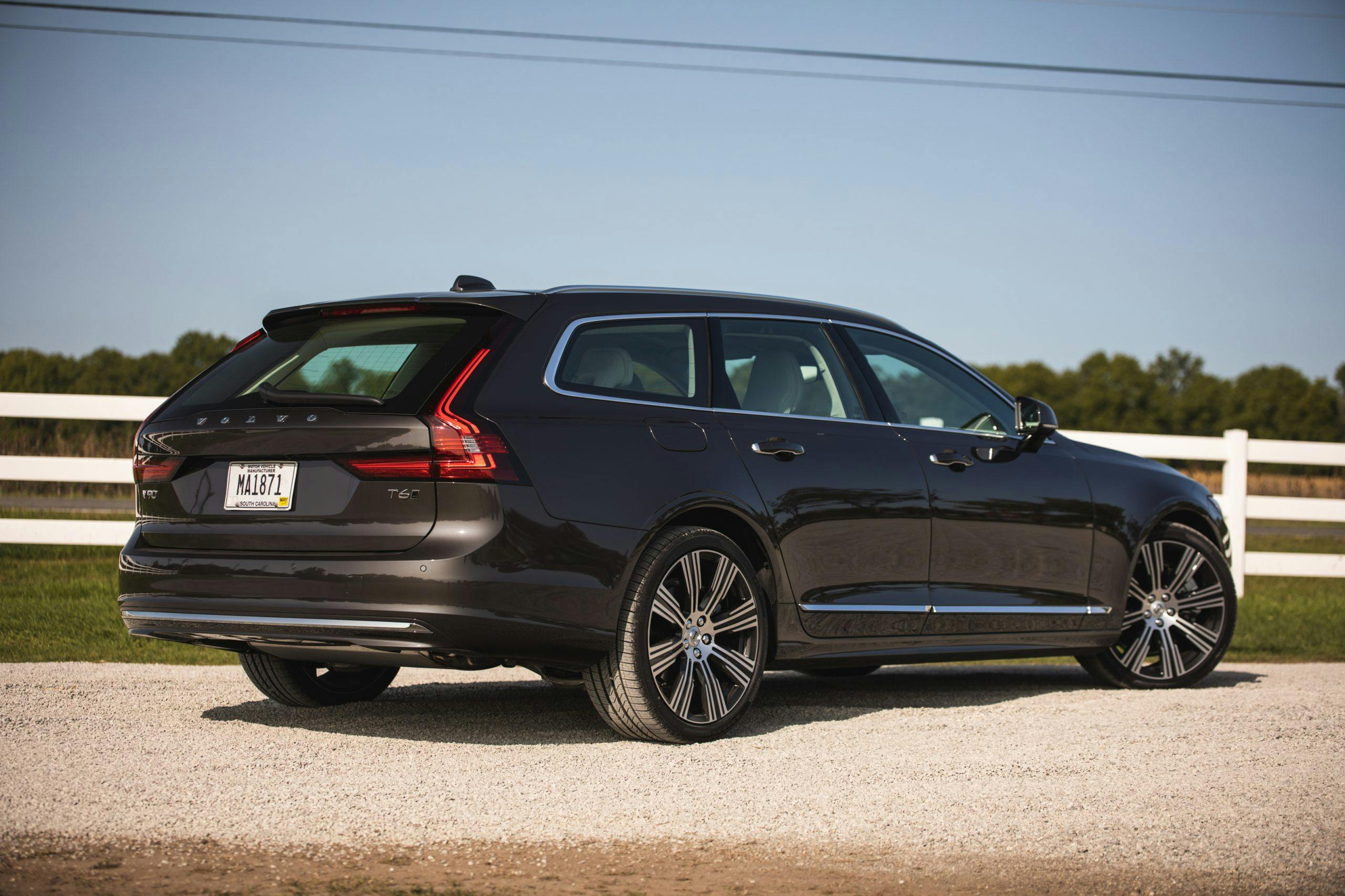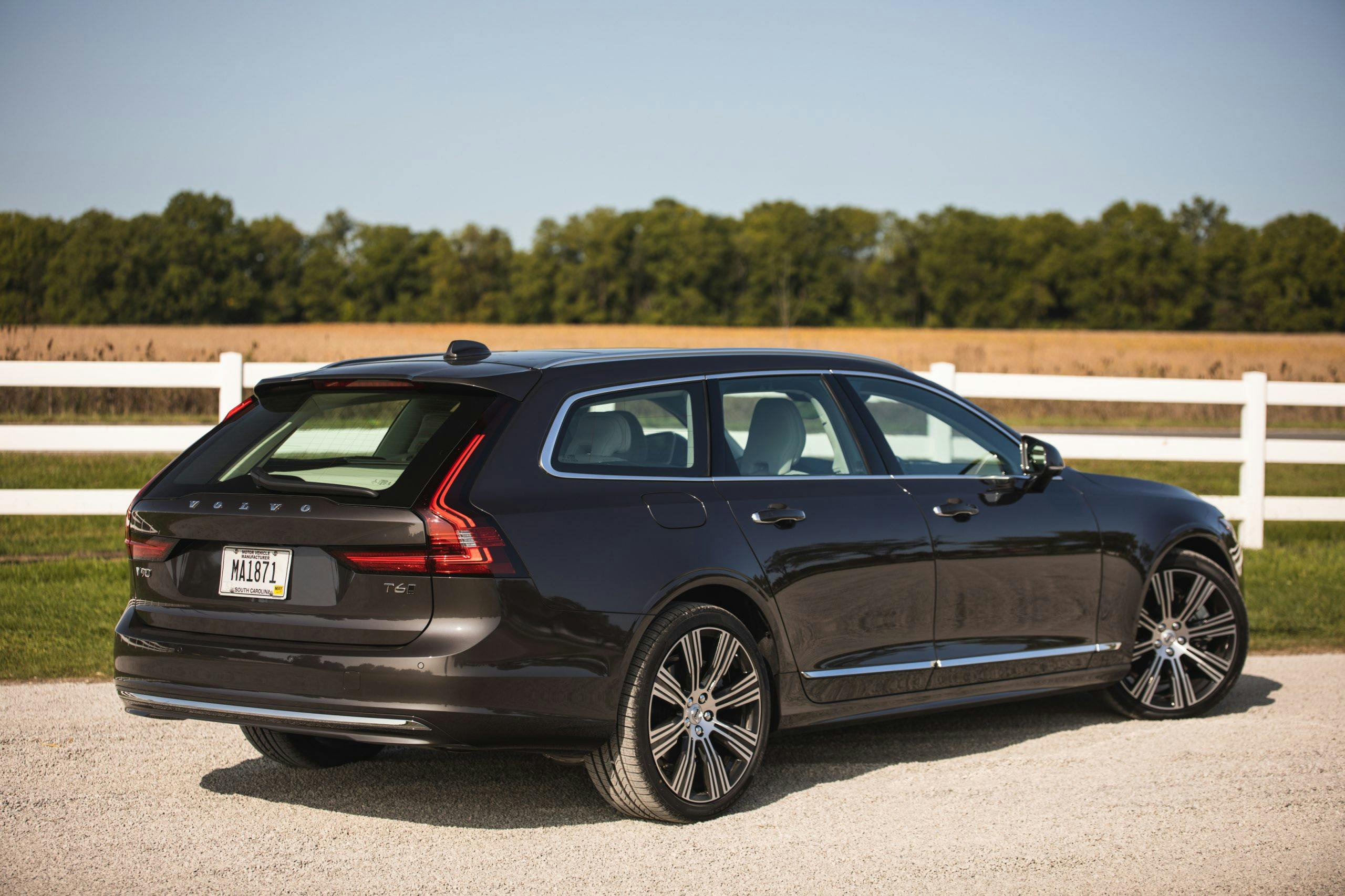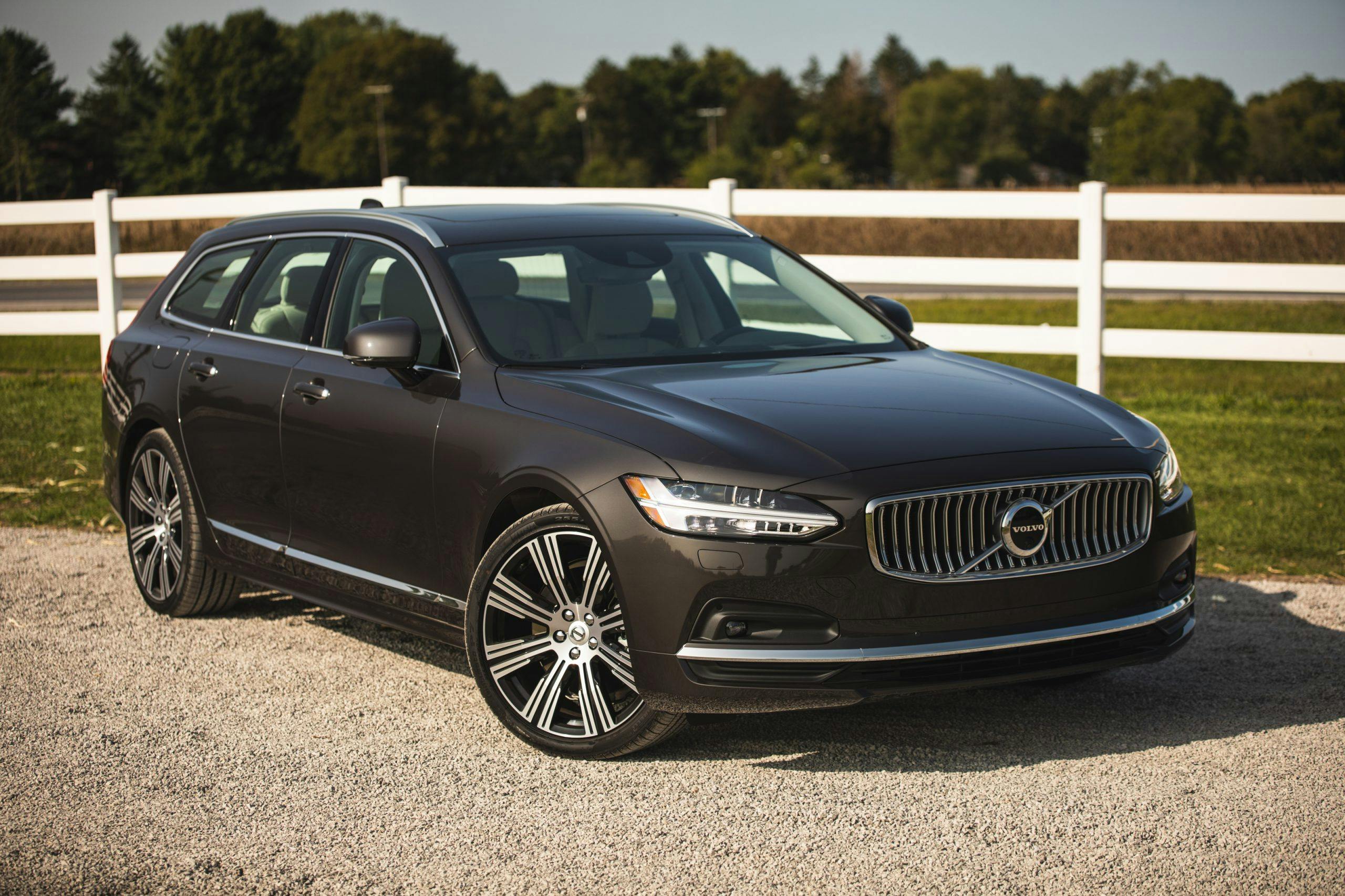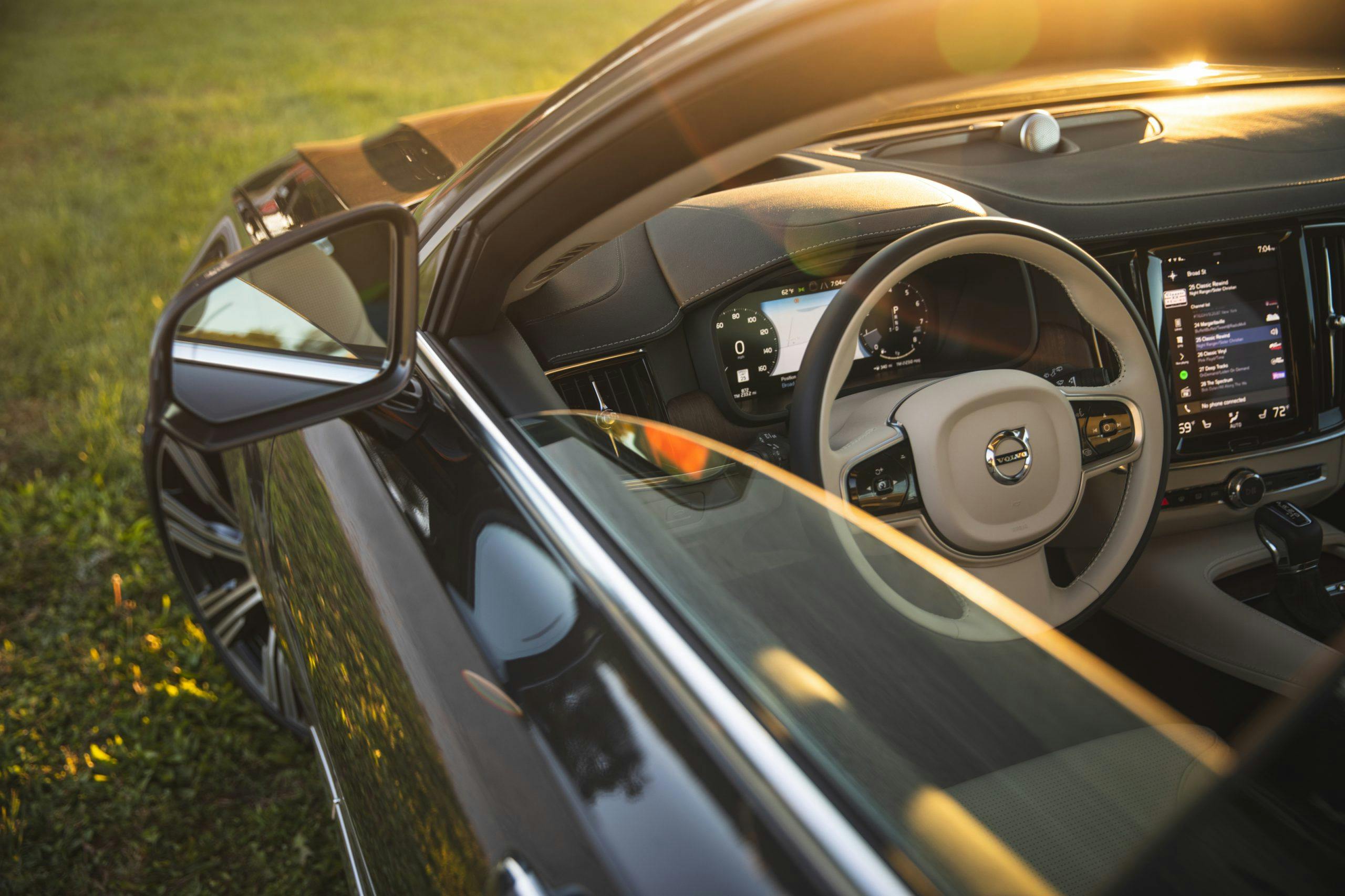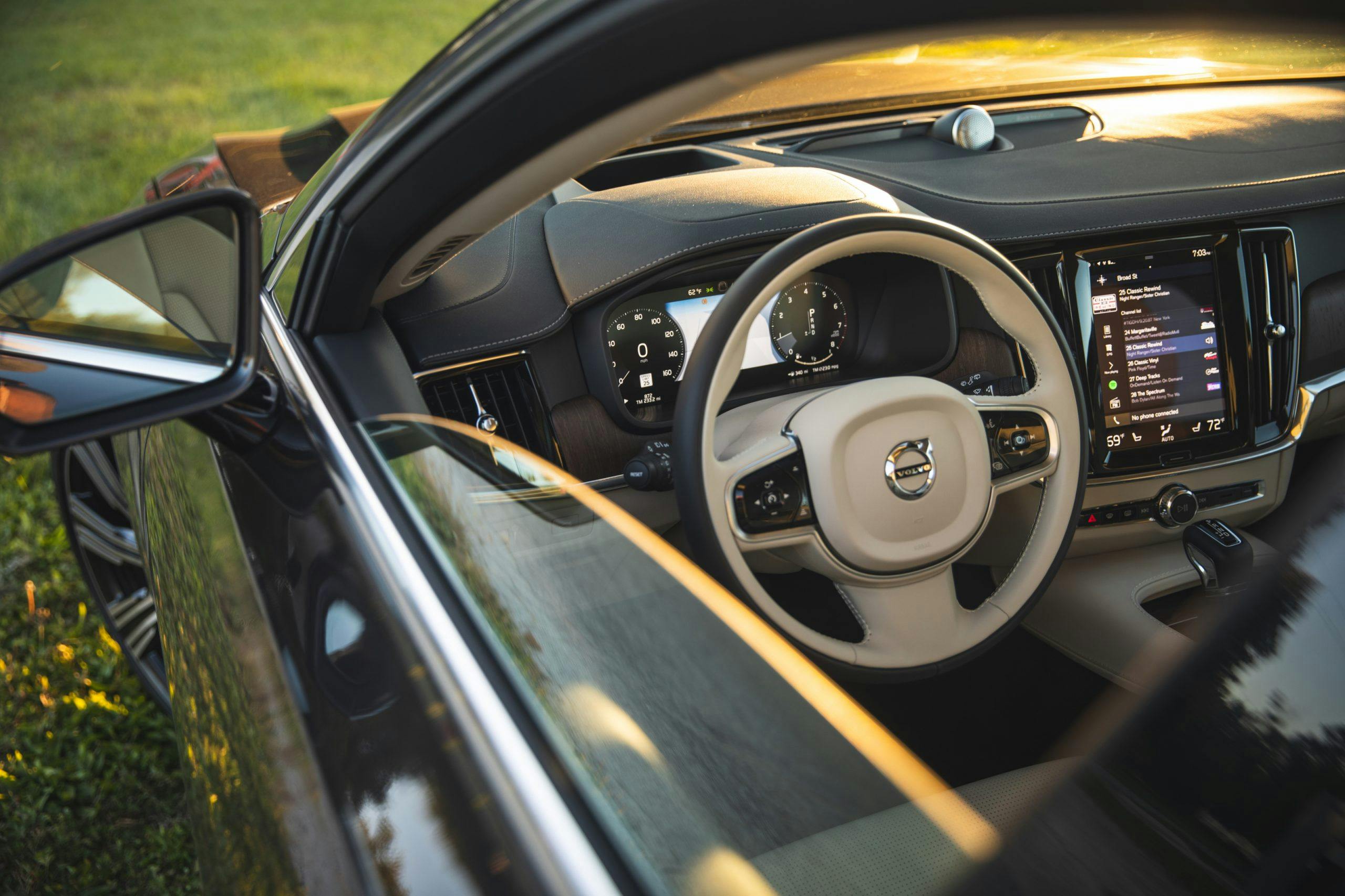Review: 2021 Volvo V90 T6 AWD Inscription
Before the age of minivans, and certainly before the age of crossovers, wagons were default family transportation. Volvo was especially talented at studying and delivering what middle-class, kid-schlepping parents needed: safety, reliability, cargo space, and a little dignity. Though the Swedish outfit has moved its target significantly upmarket since the classic 245 debuted in 1974, Volvo has not abandoned its thoughtful execution of the longroof. Amid herds of tubby, towering SUVs, the V90 calmly stands apart.
The V90 isn’t a money maker for Volvo. The brand’s commitment to a body style so entwined with its brand image is not a response to insatiable demand. Both wagons—the V90 and its smaller sibling, the V60—represented just 2.74 percent of Volvo’s U.S. sales in 2019. SUVs, on the other hand, accounted for over three-quarters of the total figure. Both wagons are at this point familiar models, each riding on Volvo’s Scalable Product Architecture and firmly part of the Geely-era strategy (2010–present). The first V60 debuted in 2011 and is now in its second generation; the V90 arrived four years ago.
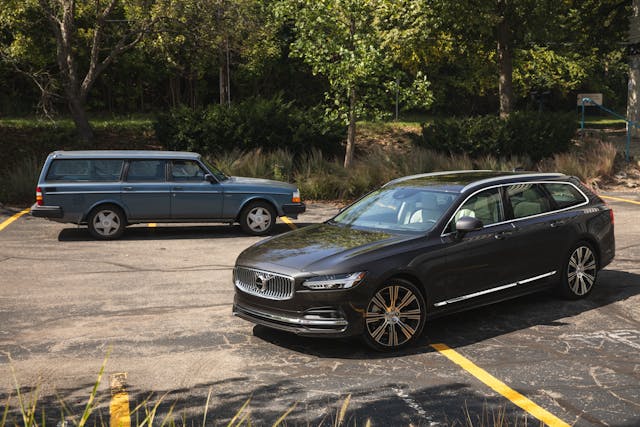
True, if you want a Volvo wagon this sleek and low-slung you must place a special order; Volvo’s U.S. dealers only stock the V90 in Cross Country configuration. (That’s Volvospeak for a slight lift, a dose of plastic body cladding, and all-wheel drive; such variants outsell traditional wagons roughly two-to-one.) The V90’s relative exclusivity perhaps adds to its appeal, though, and buyers willing to spend upwards of $60,000 on a traditional European wagon—one that actually rolled off the production line in Gothenburg, Sweden—will appreciate ordering their longroof exactly to taste.
The $67,640 V90 we tested was equipped with all major options, including the all-wheel-drive T6 drivetrain, a $6000 upgrade over the front-wheel-drive T5 powertrain that brings 316 hp and 295 lb-ft torque (vs. the T5’s 250 hp and 258 lb-ft). The power upgrade comes courtesy of a supercharged and turbocharged inline-four. An eight-speed automatic is the only available transmission. The Bowers & Wilkins sound system topped the list of add-ons at $3200, followed by the Advanced Package ($1500) which added a heads-up display and a 360-degree camera view. Volvo’s adaptive air suspension rang in at $1200 and the Climate Package—heated wiper blades, rear seats, and steering wheel—at $750. 20-inch alloys and metallic paint added $800 and $645, respectively.
The V90’s greatest strength is its design. This is a gorgeous vehicle with real presence on the road. (I’ll admit my bias as a Volvo wagon owner, but even then, I don’t reach for “elegant” when describing my brickish 245.) Few SUVs compete with the V90’s sleek profile—when was the last time a GLE earned a compliment from a U-Haul driver in a McDonald’s drive-through? Even so, the V90 doesn’t sacrifice practicality for elegance. Parents could pack this wagon full of kids and suitcases for a road trip one weekend, then hire a babysitter and take a luxurious cruise downtown for a night out the next.
Our tester’s sparkly Platinum Gray Metallic taupe paint proved especially popular with passers-by, but the good stuff is on the inside. The V90’s interior combines a calm, organized Swedish aesthetic with materials that are worthy of a large luxury wagon. Our Inscription model featured oak trim on the dash; R-Design models (there’s no difference in price) have metal mesh for a sportier vibe. The Nappa leather seats are superbly comfortable; at 5-foot-6, I particularly appreciated the adjustable side bolsters unique to the Inscription trim. A 9-inch, vertically-oriented touchscreen absorbs nearly all analog controls, leaving the center console clutter-free. Behind the delightfully simple steering wheel sits a 12.3-inch display framed above by a stitched leather dash. The standard panoramic moonroof makes both front and rear rows feel especially airy if you also spec the cream-colored leather. The only ergonomic oddity is the oblong, metal-trimmed engine start/stop button, which twists in the same direction for “on” as well as “off.” You get used to it, but it isn’t intuitive.

Having recently reviewed a T5-equipped V60 Cross Country, I found the V90’s twin-charged, 316-hp T6 four-cylinder far more capable: The V90 weighs only 90 pounds more, so the T6 powertrain’s additional 66 hp and 37 lb-ft of torque are a perceptible and welcome boost. Another advantage of the uprated powertrain is the 3500-pound tow rating; T5-equipped wagons top out at 2000 pounds.
Steering feel is rather artificial, but this wagon isn’t targeting the sports car crowd; if the lightness bothers you, you can configure an individual drive mode to add some heft. There’s significant road noise from the optional 20-inch wheels and tires, but the handsome alloys don’t make for a harsh ride. The optional air suspension does a solid job of soaking up impacts, even on dirt roads. Body roll exists, but it’s well-controlled. Lean into the gas on a cloverleaf on-ramp or back road bend and the wagon remains settled. Under aggressive braking or acceleration there’s noticeable dive/squat. Buyers willing to sacrifice an SUV’s ride height will reap the rewards of the V90’s car-like stance and its well-mannered driving behavior. The wagon soaked up highway miles, inched through city traffic comfortably, and handled twisty roads with confidence.
The V90 comes equipped with a suite of safety and driver-assist features that befit a 2021 luxury wagon. The LED headlights swivel to “see into” a corner, lane-keeping and lane-departure systems are ever vigilant, and Volvo’s driver assistance system (Pilot Assist) with adaptive cruise control comes standard. Once Pilot Assist and cruise control are engaged, the low-level autonomous system requires mild steering inputs to register driver attention. On the sweeping curves of Michigan’s two-lane state highways, the system frequently needed a hand, and Volvo rightly specifies that the driver should not wait for the system to provide steering assistance around curves. The optional head-up display (it’s bundled into the $1500 Advanced Package with the 360-degree camera view) is extremely practical when adapting to speed limits in unfamiliar areas.

Driver-assist and safety systems aside, Volvo’s Sensus infotainment system can be frustrating. The voice recognition system balks at “Take me to the nearest Target.” The name of a local park baffled the manual input system, which can only receive information beginning with country or state and ending with a house number. Though it boasts an onboard Spotify app, the system often took 10–20 seconds to load. That said, Volvo has clearly thought through the consequences of removing analog temperature controls; adjusting hot or cool air takes two simple taps, and the center screen’s simple default display isn’t distracting to the driver.
Volvo knows infotainment has been a weak point for its current-generation vehicles, and the company is planning to roll out an all-new Android OS interface throughout its lineup. The system, engineered by Google rather than by an OEM, is already available in the Polestar 2 and will premiere for Volvo in the 2021 XC40 Recharge.
Should you be willing to spend $3200 on a sound system upgrade, the Bowers & Wilkins sound system compensates for many of the Sensus system’s wrinkles. The 1400W, 19-speaker system is robust, warm, and beautifully balanced. I spent a delightful 38 minutes and 52 seconds virtually immersed in Donald Fagan’s The Nightfly without suffering from hissy or piercing trebles. The system can generate sternum-vibrating bass for, say, Billie Eilish, without triggering a migraine.
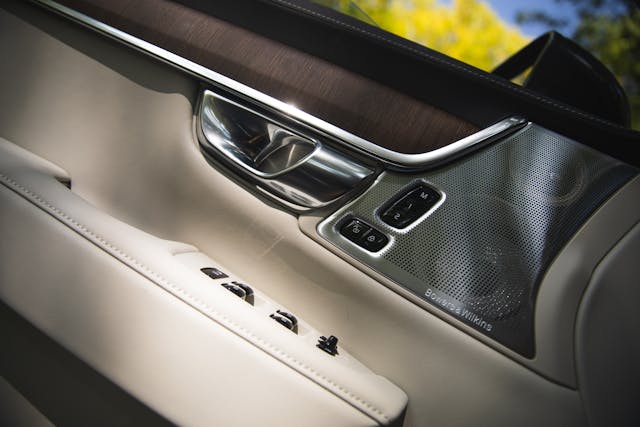
Though we associate wagons with vast amounts of cargo space—with the rear seats folded, my 245 can swallow a twin mattress—the V90 fails to trump competing SUVs on rear cargo space alone. With the seats folded, the V90 tops out at 69 cubic feet (2.6 more than the V60); Mercedes-Benz’s GLE has 74.9 cubic feet and BMW’s X5 72.3. Where Volvo’s wagon has an edge, however, is in usability—not to mention overall looks. Despite the luxurious, light-colored leather in the front cabin and both rows of seats, Volvo’s thoughtfully covered the back hatch and the rear surface of the second row in dark carpet. The second row easily folds flat, and the wagon’s low deck height and high-hinged hatch makes loading easy. The driver’s-side second-row seat stows separately, allowing for two rear passengers and pass-through panel for hiking poles or skis. The chrome scuff plate won’t stay pristine for long, though.
The V90 will perhaps struggle to convert younger shoppers keen on an SUV. On the other hand, those who want to buck the high-riding trend in particularly tasteful fashion will relish the V90’s unique style and exclusivity. For them, the cargo-swallowing hatch may be a practical aside to the V90 as an expression of an avant-garde, Euro-chic sensibility. It’s hard to imagine the 245’s eminently utilitarian designers foreseeing the Volvo wagon evolving in this way, but when the final product is executed this well, we’re happy to be along for the ride.
2021 Volvo V90 T6 AWD Inscription
Base/as-tested: $59,440/$67,640
Highs: Refined, eye-catching exterior. Convincingly luxurious interior materials. Seats and stereo are ideal road trip companions.
Lows: Clunky voice recognition, molasses-slow infotainment load time upon startup.
Summary: The Volvo wagon transmogrified into a graceful statement of avant-garde luxury. Get used to it.

